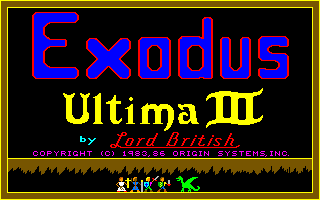
The party of four that a player uses can be chosen at the beginning of the game. Enemies on the overworld map can be seen and at least temporarily avoided, while enemies in dungeons appear randomly without any forewarning.
#Exodus ultima iii series#
This differs from the two previous games in the Ultima series in which the player is simply depicted as trading blows with one opponent on the main map until either is defeated. However, in battle mode, each character is represented separately on a tactical battle screen, and the player alternates commands between each character in order, followed by each enemy character having a turn. During regular play the characters are represented as a single player icon and move as one. Also, Exodus differs from previous games in that players now direct the actions of a party of four characters rather than just one. Ultima III was followed by Ultima IV: Quest of the Avatar in 1985.Įxodus featured revolutionary graphics for its time, as one of the first computer RPGs to display animated characters. Ultima III hosts further advances in graphics, particularly in animation, adds a musical score, and increases the player's options in gameplay with a larger party and more interactivity with the game world. The player character travels to Sosaria to defeat Exodus and restore the world to peace. Ultima III revolves around Exodus, the spawn of Mondain and Minax (from Ultima I and Ultima II, respectively), threatening the world of Sosaria. Originally developed for the Apple II, Exodus was eventually ported to 13 other platforms, including a NES/Famicom remake. Released in 1983, it was the first Ultima game published by Origin Systems. It is the final installment in the "Age of Darkness" trilogy.

Exodus is also the name of the game's principal antagonist. Ultima III: Exodus is the third game in the series of Ultima role-playing video games. Amiga, Apple II, Atari 800, Atari ST, Commodore 64, DOS, FM-7, MSX2, Macintosh, NEC PC-8801, NEC PC-9801, NES, Sharp X1


 0 kommentar(er)
0 kommentar(er)
